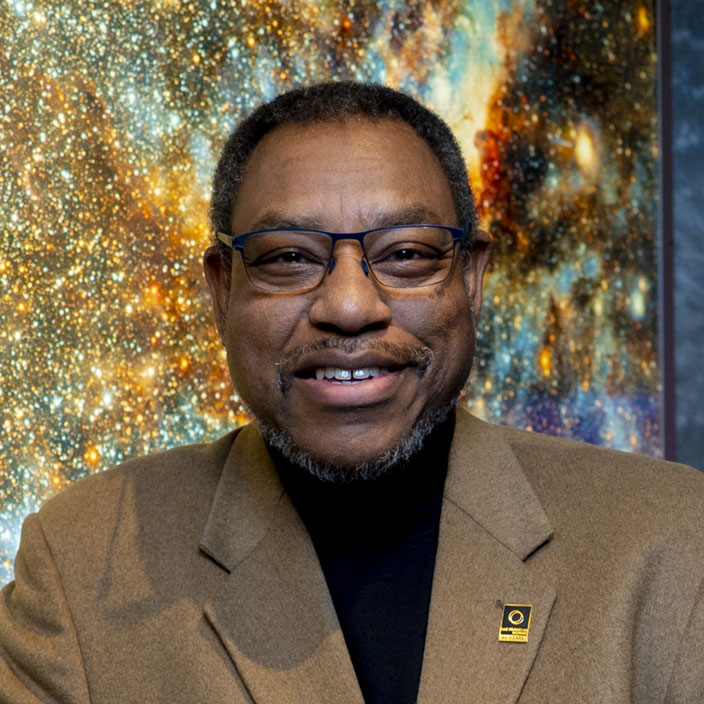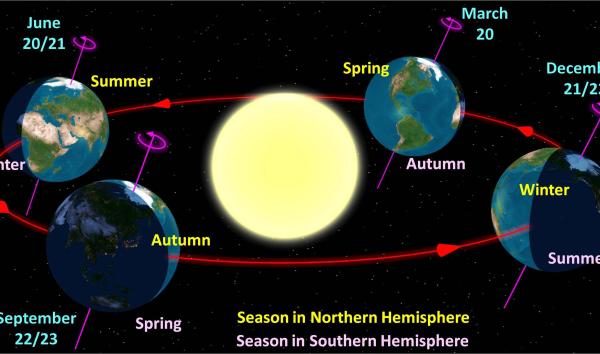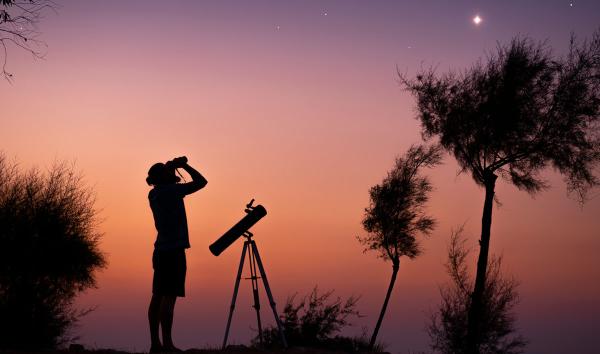Derrick Pitts, Hon.D

Derrick Pitts, Hon.D
For many Philadelphians, Derrick Pitts is The Franklin Institute. Since 1978, Derrick has been teaching us to look up—and to wonder about what we see up there.

We all know that Derrick is an excellent “teacher.” What’s made him famous in Philadelphia is his ability to help everyone appreciate the universe as he sees it—not a watered-down sketch of the universe, but a rich, deep, complex version with human connections that everyone can understand at some level.
Derrick is currently the Chief Astronomer and Director of the Fels Planetarium at The Franklin Institute. He’s also been a NASA Solar System Ambassador since 2009 and serves as the “Astrobiology Ambassador” for the NASA/MIRS/UNCF Special Program Corporation’s Astrobiology Partnership Program. One of his newest honors is an appointment to the outreach advisory board for the world’s largest telescope, the new Thirty-Meter-Telescope at Mauna Kea in Hawaii.
He appears regularly in the media as a science content expert including appearances on the “Colbert Report” on Comedy Central and “The Late, Late Show with Craig Ferguson” on CBS. For more than two decades, Derrick has hosted award-winning astronomy radio programs for Philadelphia’s two public radio stations and created signature astronomy television programming for PBS. One of the highlights of Derrick’s career was meeting President Obama and his family when he was invited to participate in the first-ever White House Star Party.
Derrick has received numerous awards including an honorary Doctor of Science Degree from La Salle University, and serves on the Board of Trustees for his alma mater St. Lawrence University. His twitter handle is @CoolAstronomer and his motto is “Eat, breathe, do science. Sleep later.”
Recent Blogs by Author

Seeing the International Space Station!
Updated April 27, 2020
Looking for something unique to do with your spare time? Become an ISS spotting expert! All you need is your phone and a place to view from – your backyard, your front step, a nearby intersection – but no telescope. This is almost exclusively a ‘naked eye’ experience to be done only when the sky is clear. Share this information with your family across the region, then do it together as a group!
Here’s when to look. Timing is specific to the Philadelphia region.

The Legacy of the Spitzer Space Telescope
Space telescopes are earth-orbiting telescopes that augment work done by ground-based instruments. Because of their location outside Earth's atmosphere, space telescopes can collect data from electromagnetic sources like heat, x-rays and gamma rays, which are altered when they pass through our atmosphere.

Astronomy with a Flashlight
Want to know the astronomy behind why it’s cold at this time of year? Logically, it must be because Earth is farther from the sun, right? Nope! Actually we’re now closer to the sun in our orbit now than at any other time of year. So why is it cold? Grab your flashlight and let’s find out!
Let’s talk about the northern hemisphere first.

Winter Solstice
Most of us dread the first day of winter. We think of it as the shortest day, the cold day, the dark day. But the first day of winter (aka the winter solstice) actually is the gateway to Spring and has an astronomical connection. In fact, it’s all about the astronomy! Here’s how.

Exoplanet Name Contest Winners Announced
On December 17, 2019, the International Astronomical Union announced results for the Name Exoworlds contest for each participating country. We are pleased to announce the winning name pair for the US star and exoplanet system HD17156.
Star: Nushagak
Nushagak is a regional river near Dillingham, Alaska, which is famous for its wild salmon that sustain local indigenous communities.

Derrick Pitts's Tips for Telescope Buyers
Interested in buying a telescope? Making the right purchase need not be a daunting task if you're armed with a few simple guidelines. There are several different types of telescopes on the market and the first place to start in choosing one is to decide what you want to do and how much you want to spend.

